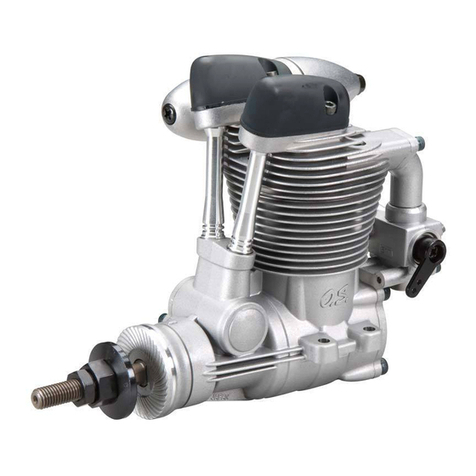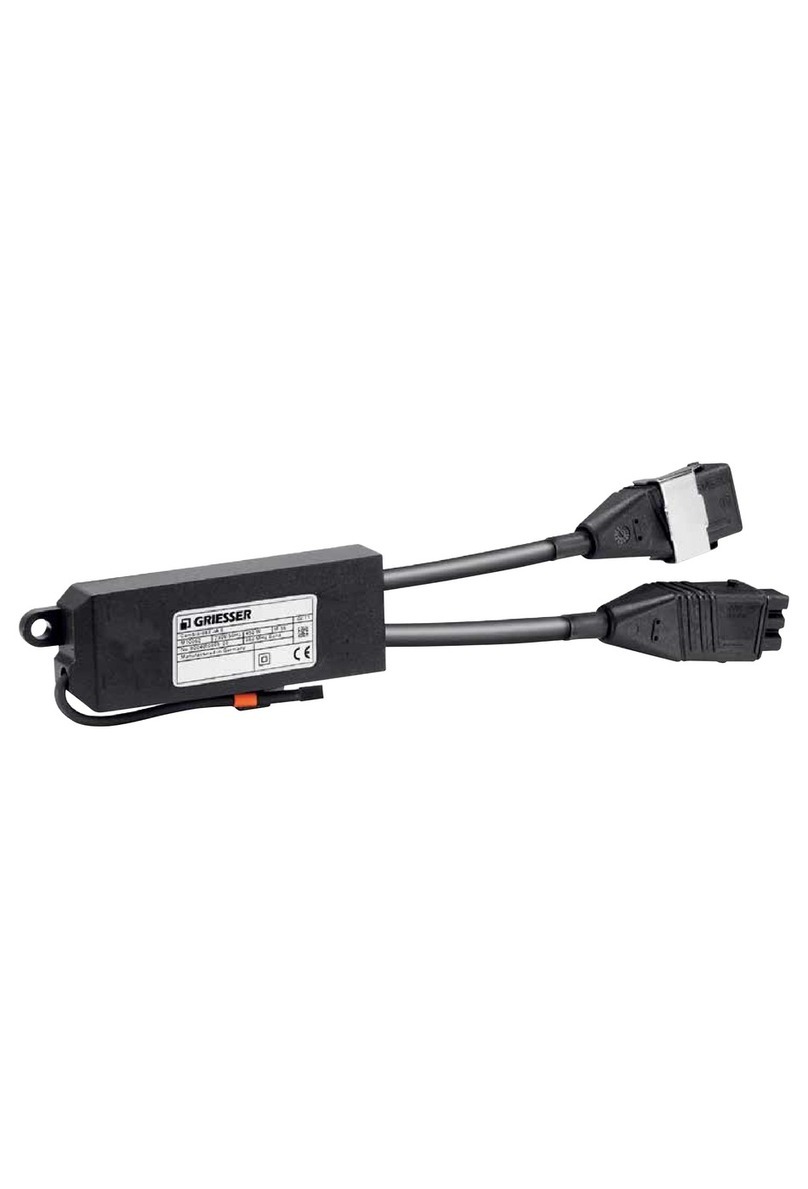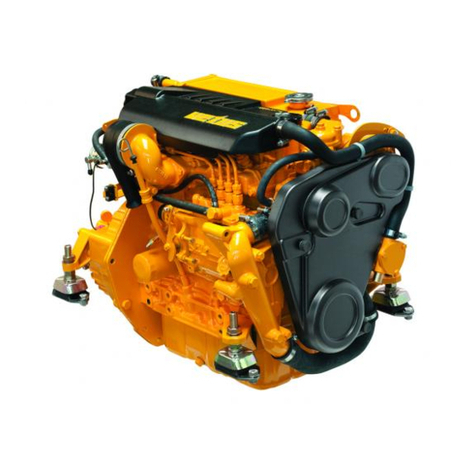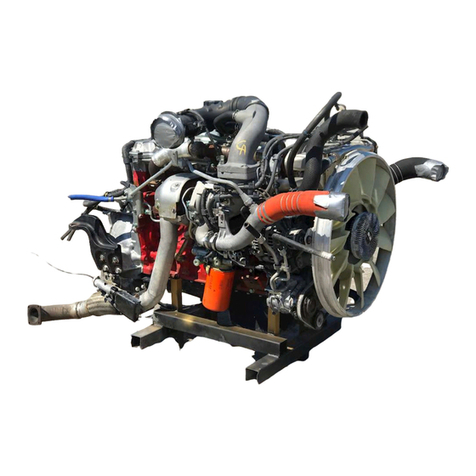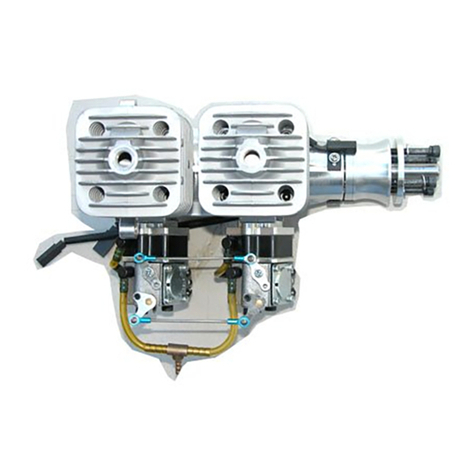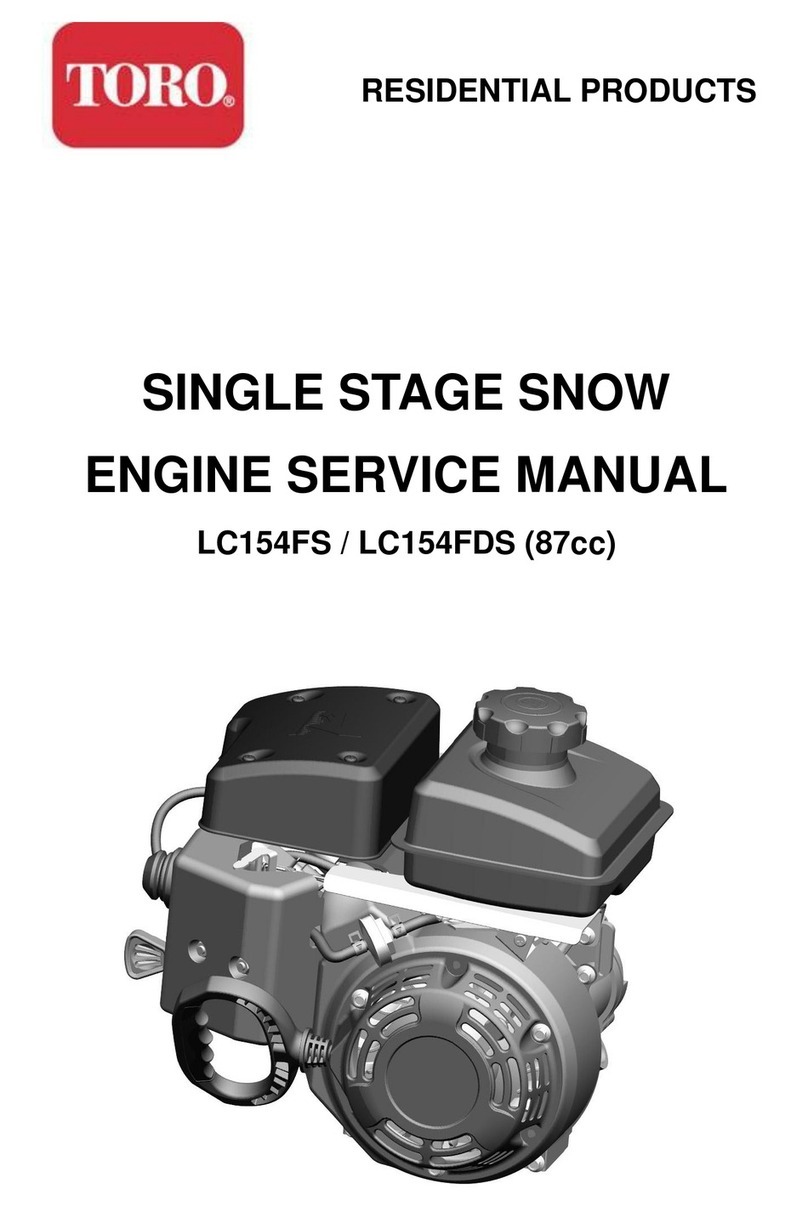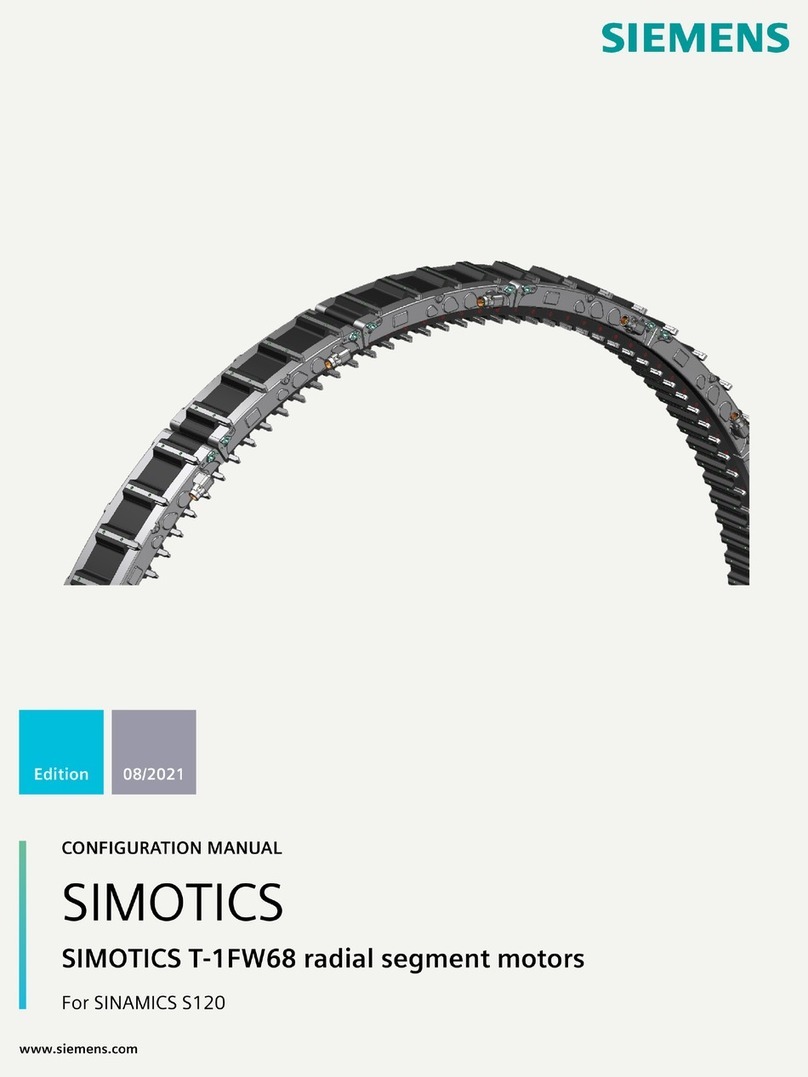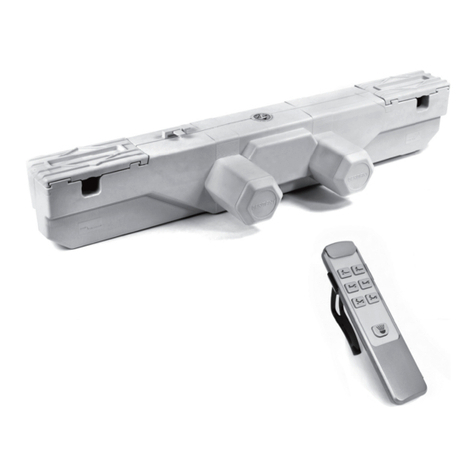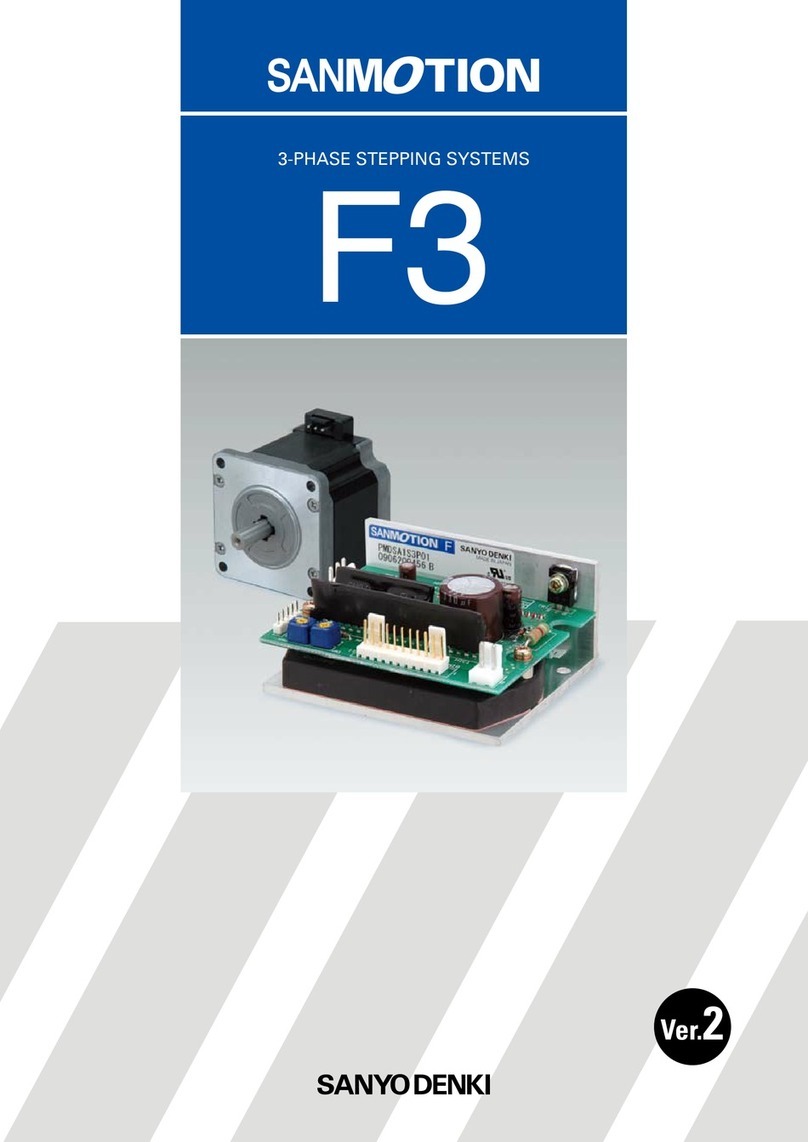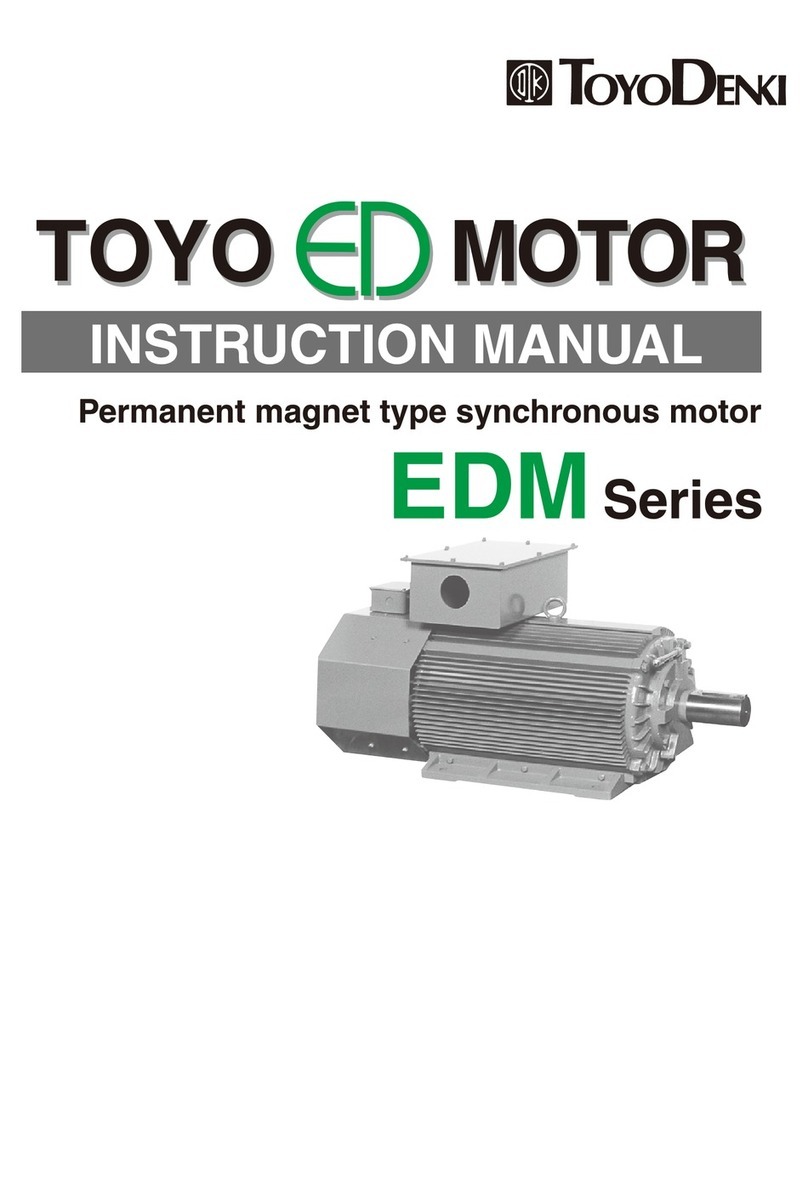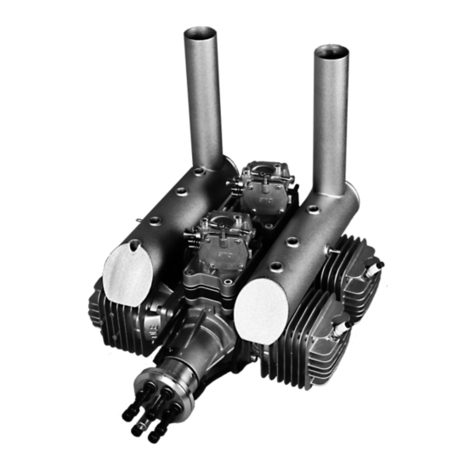TKM K4S User manual

1
FORMULA TKM 4-STROKE
Installation & Running Guide
Introduction
Thank you for buying the TKM K4S 4-stroke engine which offers to karting the combination of high
performance and low weight to bring great racing at a budget cost.
TKM K4S engines are designed and manufactured exclusively for use within kart racing environments on fit
for purpose kart tracks with sealed type smooth surfaces. Any other type of usage is outside the engine’s
use of parameters.
TKM K4S engines should only be installed and operated by those with suitable knowledge and experience,
and we take no responsibility for warranty or other claims where incorrect installation or operation has been
carried out.
As with any high performance engine it is vital that you look after the engine to ensure it is running correctly.
Look after the engine well, run it correctly and you’ll have many hours of trouble-free driving.
Please be very careful to study this guide before you install & run the engine to ensure it is being operated
correctly. Also make sure that you keep within the service periods recommended within the guide. We wish
you great racing & fun.
The TKM K4S engine package is provided to you in a form which is easy to fit to your kart and should take
less than an hour with minimal needs.
Warning: Identifies an instruction, which if not followed may cause injury or endanger the life of the driver,
mechanic or third party or may cause damage to your TKM K4S engine.
General precaution and safety information for engine installation & running
Warning: For the best possible engine operation, compliance with the following advice regarding
installation of engine and equipment is required.
Warning: Modifications to engine or equipment are not allowed.
Warning: Besides the engine-specific installation advice, also take note of information from the respective
chassis manufacturer where available.
Step 1
Engine comes complete with:- Radiator (Standard engine mounted or larger Enduro brake side of chassis
mounted), Carburettor, Noise box, Exhaust, Engine Mount (less clamps), and the Oil Breather Condenser
Pot together with the Petrol Pulse Pump mounted on the seat bracket with pipes.
The standard engine mounts are available in either: 90 x 32mm or 92 x 32mm. They are stamped with 90 or
92 on the bottom face in a recess for identification. Other sizes of mounts are available to special order.
Step 2
Place the engine onto the chassis and ensure that the engine mounts fit correctly. Make sure that the engine
is clear of seat brackets and can slide along the chassis rails a small distance to allow for chain adjustment.
We can supply you with a set of 2 rising blocks with 4 longer bolts to raise engine by 9mm to give extra

2
clearance on side bar mounting if required. Fit your existing mount clamps providing there are suitable and
secure lightly with mount clamp bolts. Ensure that the mount clamp bolts are the correct length and neither
too long so that they bottom or too short so that there is insufficient thread holding.
Step 3
Take the bracket with condenser pot and pulse pump mounted and locate on the rear of the seat. This
should be mounted as high as possible on the seat so that the top of the condenser unit is at least 30mm
above the seat lip. The pot must also be as close as possible to vertical. It should be fitted to the rear of the
seat but to the right hand side of the centre point so that it is close to the engine. Drill the seat and mount
using the bolts and spacers provided.
When bolting up note that there is 10 degrees of rotational adjustment available in the M5 slotted holes of
the condenser pot mount on the bracket. This makes it easy to gain the best position for the main large
breather pipe from the engine. See picture below.
Condenser pot mounting to seat
Step 4
Connecting the oil breather pipes. The small clear oil return pipe should be connected from the engine to
the small union at the bottom of the pot ensuring that there is a nice smooth steady fall on the pipe from
condenser to engine. Trim if required and cable tie. Without this steady fall oil will collect in pipe and restrict
oil returning to engine.
The larger bore plastic pipe should run straight up from the engine and then naturally over the top of the carb
inlet manifold and across to the condenser pot union with a steady rise if possible. Again trim if required.
Secure with a cable tie – though note this is the pipe you will have to remove to insert oil into the engine.
Warning: Do not run the engine without oil as this will lead to engine failure.
Step 5
Connect the fuel system piping. But first remember that if you have previously been using the fuel tank
with a two-stroke engine you MUST empty the tank and flush with clean unmixed fuel in a safe environment.
Also note that this engine requires an extra outlet/inlet on the tank (three in total) so this should be fitted in
the top of the tank at this stage. Make sure the tank is clean and flushed after drilling and fitting of extra
union. An inline tank filter is highly recommended.
Warning: When handling fuel, do not smoke or allow naked flames. Gasoline and gasoline vapour are
highly flammable and explosive under certain conditions.
Pipe 1(Fuel Supply) is connected from the tank pick-up connector to the in arrow union on the pulse pump.
Pipe 2 (Fuel Supply) goes from the pulse pump out arrow union to one end of the Y connector (not fitted with
the 70 fuel return jet).

3
Pipe 3 (Fuel Supply) goes from the long end of the Y connector to the carburettor in union.
Pipe 4 (Fuel Return) goes from the remaining short end of the Y connector (with 70 jet) to the new fuel tank
union. This is the fuel return pipe.
Pipe 5 (Breather Pipe) goes from the tank to act as a breather – ideally located into a high mounted catch
tank. The Y connector should be located as high as possible on the kart just between the engine and the
condenser pot bracket. The Y connector arm with return jet inserted should be highest of all. This helps to
remove trapped air from the pipes. All of the pipes when trimmed to length and connected must be cable tie
neatly in position without deforming or reducing their internal bores which could cause fuel starvation.
Warning: Ensure that all fuel pipes cannot chafe or rub against other parts which could cause a fuel leak.
Note that the blue pulse pipe from the engine brass pulse union located under the inlet manifold goes to the
rearward facing brass pulse union on the pulse pump.
Step 6
Check the alignment of the axle sprocket with the clutch sprocket teeth, adjusting as necessary ensuring
that you have sufficient axle key located in the sprocket carrier. Remember that you will need less teeth on
the rear sprocket than with a two-stroke. Try 12T: 68T as a good starting point. If the sprocket carrier does
not have sufficient location on the key then it can always be turned around so its offset can cover the key.
Once complete, fit chain and adjust (12mm of total up & down movement) ready for use, remembering to
fully tighten the clamp bolts. Finally adjust fitment of the fully enclosed plastic chain guard to ensure it does
not rub against the exhaust and it is spaced out from axle bearing to suit the chain alignment.
Step 7
Fit the exhaust onto the manifold with both securing springs and also locate with springs onto exhaust cradle
mount.
Warning: The position of this exhaust cradle MUST be adjusted to ensure a natural fit with no tension on
the exhaust manifold. If this is not done then the exhaust manifold pipe may touch plastic float
bowl on carb during running which will cause dangerous fuel leaks.
Please note a special Exhaust Manifold and Cranked Exhaust is available for Pro-Karts with brake discs
located in the centre of the axle.
Step 8
Fit noise box to carb inlet with the twin air inlet filters facing approximately downwards. Note you will need a
bracket to secure the noise box from its mounting bush to a suitable location such as a securing bolt on the
rear axle bearing. Tal-Ko offer a bracket set for its own karts, though every make of kart will require
something different. It is vital to use such a support bracket and the noise box must always be supported
firmly in a natural position with no pull on carb as this will cause the carb rubber inlet connector to engine to
fracture.
Step 9
The carburettor throttle cable will need fitting to the slide of the carb. Simply remove the carb top (2 Bolts)
remove slide assembly and push cable through cable swan neck, large spring and outer small hole in needle
retaining plate. Place end of cable into the slide cable slot and reassemble carb top. Then thread through
outer cable and connect to the pedal. It is important to ensure that the pedal locates against a bolt at full
throttle to prevent damage to the carb or pull on the rubber inlet connecting manifold.
Warning: The carburettor throttle cable must not be kinked or restricted as the carburettor slide might
stick in full throttle open position.
Step 10
Next connect the ignition on/off switch. This can be fitted anywhere suitable, though we provide with the
engine a bracket that allows you to fit switch on the M8 bolt holding the upper plastic steering column bush to
chassis just above the tank. It may well require a new longer length bolt when this bracket is fitted to allow
the bolt to fully enter the Nyloc part of its securing nut.
Connect a red wire from the switch to the spare red short lead coming off the coil unit. Another lead must be
earthed from the switch to the engine coil earth lead bolt. If this earth is not good then the switch will not

4
operate. Ensure both wires are neatly secured with cable ties or PVC tape. Remember to clearly mark the
On/Off positions.
Step 11
A radiator coolant catch tank must be used. It can be fitted in between bottom of radiator and engine near
clutch guard using a cable tie on bottom radiator bracket on standard engine mounted radiator or on the
bracket designated for it with the larger brake side mounted Enduro Radiator.
Warning: Please follow the instruction of the chassis manufacturer for mounting the water coolant hoses
to the chassis if available.
Warning: For Enduro radiator installation to the chassis please follow the instruction of the chassis
manufacturer if available.
Enduro Radiator (Optional)
In very hot weather or warm climate countries we advise use of the optional Enduro style radiator system.
This comprises of a larger radiator fitted to the brake side of kart. Tal-Ko supplies the full kit which includes
radiator, pipes and mounting brackets. The use of an inline thermostat is also advised with this radiator. This
thermostat is not included in the kit and can also be purchased from Tal-Ko.
Warning: The engine temperature should not exceed 90C as exceeding the engine temperature could
lead to serious engine failure.
Picture shows an Enduro type radiator fitted to kart.
Step 12
You will need to drill/cut holes in both the outside and inside faces of the sidepod to allow access for the
remote hand held starter shaft.
Please note that if you wish to install a temperature gauge then the sensor MUST be located in the special
location hole provided at the top of the engine. This will have an M10 x 1 taper plug in place which should be
removed and the sensor fitted with PTFE tape to prevent leakage.

5
TKM K4S 4-Stroke
Engine Running Instructions
Please Read Carefully Before You Use Your Engine
Warning: Identifies an instruction, which if not followed may cause injury or endanger the life of the
driver, mechanic or third party or may cause damage to your TKM engine.
General precaution and safety information for engine running
Warning: For the best possible engine operation, compliance with the advice regarding installation of
engine and equipment is required.
Warning: Modifications to engine or equipment are not allowed.
Warning: Besides the engine-specific installation advice, also take note of information from the
respective chassis manufacturer if available.
Before You Start Your Engine
Warning: Before engine operation, check through the Installation Guide and then read the Running Guide
to ensure all other steps are carried out, such as filling with oil and water before starting the
engine.
Water Coolant
The engine must be filled with coolant mixed with anti-freeze or a similar inhibitor before being started. Make
sure the inhibitor is suitable for aluminium engines and use either product at min 50% strength. When filling
ensure that the radiator top core is just covered and that the water has no airlocks in the system (see later
note). Replace pressurised radiator cap.
Warning: Not following this will lead to engine damage (e.g. breakage of cylinder).
Type of Radiator
The engine is normally fitted with the smaller engine mounted radiator which will normally run in the 70-75C
temp range. If fitted with the larger brake side mounted optional Enduro type radiator which is recommended
for hot climates, then a much lower temp range of 60-65C can be achieved. If the engine does not reach the
minimum specified operating temperature of 50C due to the low ambient temperature, then the cooling
efficiency of the radiator must be reduced by partially covering the radiator with adhesive tape or similar.
Note that above approximately 85C it is likely that small quantities of water coolant fluid may be released out
into the radiator catch-tank. Always ensure that the water coolant level is just above the radiator internal
core. You will need to refill the radiator just past the top internal core before you run engine again.
Warning: Do not remove the radiator cap or water coolant hoses during and immediately after kart
operation. Risk of burning & scalding.
Note: If the coolant level is low you may well get sudden large up and down changes in temperature showing
on your temp gauge.
Note: The quoted running temps are taken when racing on the track and not into the pits after a race, as
these temps will rise to higher levels because kart is now stationary with no cool air passing through radiator.
When starting the engine from cold the best and quickest way to warm it up is to start the engine and leave it
ticking over with driver suitably clothed and seated in kart. Keep a close eye on the temperature gauge and
switch off or drive as soon as it reaches 50C – 60C.
Warning: The engine operating temperature should not exceed 90°C as exceeding the engine
temperature could lead to serious engine failure.
Warning: For optional Enduro type radiator installation to the chassis please follow the instruction of the
chassis manufacturer if available.

6
Warning: The engine must only be allowed to be run at peak performance after reaching the specified
minimum operating temp of 60C. Operating the engine at too low a temperature could result in
piston seizure.
Warning: Please follow the instruction of the chassis manufacturer for mounting the water coolant hoses
to the chassis if available.
Oil Lubrication
Lubrication is absolutely vital to the continued life of your engine. NOTE: The oil capacity of this engine is
very small to aid compactness and high performance. It is therefore important that you check the
level regularly.
Warning: If you run low on oil then extensive damage can be caused in a matter of moments.
Warning: Do not run the engine without oil, as this will lead to engine failure.
Oil Capacity & Oil Level Sight Glass
You MUST ensure the engine is filled with oil to the minimum level before starting. From empty, new engines
will need 250ml of oil to bring the level to just above the top of the sight-glass. The oil level sight glass which
is located at the rear of the engine has been provided to check the oil level, so do so regularly. Just above
top of sight glass is correct level. The kart must be level when checking the sight glass oil level and a small
torch may be useful to get a clear sight. Always allow time for oil to find correct level (30 secs) as you can
easily overfill. The 250ml of fresh oil can be simply added to your engine via the large bore plastic oil
breather pipe attached to the rear of the engine crankcase just above the sight glass using a measuring
beaker and small funnel.
Oil Type
For the initial running in period we recommend use of Castrol GTX Magnatec 10w40 for Advanced
Modern Engines. It is recommended that you fully drain engine oil and refill after 90 mins & 180 mins of
running using 1 litre of this oil to complete the running in process and maybe first couple of races. After the
running in period, for racing the use of Castrol EDGE Sport 0W-40 or other equivalent high quality
specification synthetic oils is recommended.
Warning: Do not run the engine with incorrect grade oil, as this will lead to engine failure
Warning: Do NOT use motor-cycle type oils.
Oil Change
We recommend draining the oil and changing for fresh after every 90 minutes of engine use. Some drivers
may choose to change the oil after every race meeting which is normally around 30 minutes. This oil change
is simply carried out by cutting the lock wire on the black coloured aluminium sump plug located on the very
bottom of the engine. This can be done while the engine is still fitted to the kart. You will require a 17mm
socket and oil catch tray for the old oil. The sump nut has a magnetic internal column to collect unwanted
material and must be cleaned off before refitting. At every oil change it is advised that any material located
on this magnetic column is inspected as this will be one of the first indications that something may be wrong
with your engine internals.
Allow the engine, if possible, a good 2 minutes to drain old oil before replacing sump nut and its sealing
washer at 12 lbs/ft.
Warning: Do not over tighten this sump nut as it is made from Aluminium.
Remember to safety lock wire. The best way to top up the oil is to remove the large bore plastic breather
pipe which runs from the engine up to the Condenser Pot located on the seat bracket then simply pour in the
new fresh oil, using a small funnel, down this pipe and into the engine – making sure to replace the breather
pipe and cable tie. Oil capacity is 250 ml minimum.
Oil Filter
After the running in period and every 10 hours remove the oil filter and clean. This is located on the side of
the engine next to the clutch. First cut the lock wire and undo its large brass hex head nut with a 25 mm
socket. Remove the oil filter complete with its fibre seal washer and clean filter with an airline or other
method. Unwanted material may collect in the central core of filter and must be removed carefully before

7
refitting at 16 lbs/ft. Remember to safety lock wire. You should clean around both the sump nut and filter nut
before attempting to undo to avoid debris entering engine.
Oil Condenser & Breather Assembly
Always mount this assembly as high as possible on the rear seat in a near as possible upright position. This
assembly allows oil in the engine to breathe via the large bore plastic hose connected to rear of engine whilst
running which then collects in the aluminium condenser pot and returns back via a small plastic pipe into the
engine. This small pipe should always have a fall along its entire route to allow gravity to return oil back into
the engine. Please note that the plastic oil catch bottle is screwed on and should be emptied and cleaned
after each days racing. DO NOT pour any old oil that is in this catch bottle back into engine as it is
contaminated and may cause engine damage. This catch bottle can be drilled at it top and a safety cable tie
used to prevent bottle loss.
Fuel System
Note that the fuel system has a fuel supply pipe from the fuel tank together with a fuel return pipe system to
take off excess fuel back to the tank.
Warning: When handling fuel, do not smoke or allow naked flames. Gasoline and gasoline vapour are
highly flammable and explosive under certain conditions.
Fuel Pulse Pump
The Mikuni pulse pump mounted on the rear of the seat has arrows showing the direction of the fuel flow and
must be connected correctly. The fuel return pipe is connected to the plastic “Y” piece and has a size 70
restrictor fuel return jet fitted. This jet must not be removed or the engine will be starved of fuel. We
recommend that an in line fuel filter is used in the fuel supply pipe to pulse pump.
Carburettor
At the factory the carburettor will have been set to give an approximate setting for first starting & running.
However it will probably need the tickover speed fine tuning once first started. On the top of the carb is the
small black plastic choke lever which can be pulled upright to give full choke. This should be used in the full
choke position to first start the engine from cold. Do not depress the throttle when starting on choke as it may
cause fuel flooding of the engine. Please note that the small black coloured overflow looped pipe on carb has
a small cut split in its highest point which allows carb to vent. It must not be covered or blocked off.
Carb Jetting
We recommend the following main jets for the running in period & most running/racing.
Noise Box Type Main Jet JNR Main Jet SNR
Old Type R/R 124 122
New Type KILT 142 140
However you may find that by changing to a slightly smaller or bigger jet it will give greater performance and
crisper response, but this will depend on track and conditions. Only go down or up in main jet sizes a small
amount at a time, i.e. from 124 to say 122 and so on. You can feel if you have gone too small on main jet by
the engine holding back in a certain area of the rev range. If engine feels like it is holding back on standard
jets try jetting up. For best carburation & running results we recommend that engine is raced at around a
running temp of 70 - 75C on standard radiator and 60 - 65C on the optional Enduro radiator so with each
type of radiator you may have to run a slightly different main jet in the carb.
To change the main jets simply undo the large 14mm brass hex nut at very bottom of carb.
Warning: Let engine exhaust pipe cool before you attempt this for safety.
Warning: Place a fuel catch pot just under this nut so the fuel in the float bowl is safely collected.
Warning: Handle fuel in well-ventilated areas only.
Warning: When handling fuel, do not smoke or allow naked flames. Gasoline and gasoline vapour are
highly flammable and explosive under certain conditions.

8
Remove this brass nut assembly into which is screwed the main jet. Hold brass nut in a 14mm spanner and
unscrew jet using a screw driver and replace with different jet.
Then refit assembly into bottom of carb being careful not to overtighten. A variety of carb main jet sizes from
116 – 145 are available from Tal-Ko at low cost.
As you fine tune the carb setting you may need to slightly alter the tick over speed.
Note that temperature and atmospheric pressure may affect the best jet setting to a small degree.
Fuel
Use normal unleaded fuel. You may of course use super unleaded. Remember this engine is a 4-stroke and
does not require oil mixed in with the fuel like a 2-stroke.
Warning: Use only unleaded fuel. Other types could cause engine damage.
Warning: When mixing fuel and fuelling do not smoke or allow naked flames. Gasoline fuel is highly
flammable and explosive under certain conditions.
Warning: Never perform fuelling in closed rooms, handle fuel in well ventilated areas only.
Warning: Fuel the kart only when engine is not running and with the ignition circuit in the off position on
the ON/OFF switch.
Warning: Make sure that fuel will not splash onto hot engine components or equipment. Risk of fire and
explosion!
Starting the Engine for the First Time
Before you even attempt to turn over the engine or start you MUST ensure that it has been filled with the
correct level of oil lubricant and water coolant. You must also ensure that the fuel is fully primed into the
carb.
Warning: Always wear protective clothing for kart operation (helmet, overall, gloves, shoes, neck and rib
guards).
Warning: Driver must always be seated in kart when starting engine wearing protective clothing for kart
operation.
First, with the driver sitting in the kart, ensure that the ignition switch is off. Then engage the remote hand
held starter shaft firmly on the crank nut and hold the starter firmly. With the ignition in the off position, you
should then spin the starter for three or four short 2 second bursts just to ensure that the oil has been
pumped around the engine.
Warning: This oil circulation/priming procedure should be carried out each time the engine is started from
cold or left standing for more than 2 hours.
Then switch on the ignition, put the choke to the full on upright position and spin over on the starter without
depressing throttle. As soon as the engine starts remove the starter unit. If you are experiencing problems
with starting, let the engine run for a few seconds without being revved. You will find that with the choke on, it
will run a little faster but also quite roughly. Once it has been running for a minute or so and heated up to
around 28 C try pushing the choke lever down. You will find that the engine falters slightly and should then
pick up speed. What you are looking for is a tick over speed of about 2250/2325rpm. This can be adjusted
with the silver coloured large slide screw on the side of the carb in line with the throttle cable & carb slide. Do
not confuse this screw with the smaller one nearer the engine. This smaller screw should be set at around
1.5 turns out from closed on normal jetting and needle clip position (second groove from bottom on needle).
This smaller screw may have to be adjusted either outwards or inwards if engine keeps stopping of faltering
on correct rpm tick over. If the setting of this screw exceeds 2.5 turns out then a larger than the standard 45
pilot jet should be fitted.
A variety of carb pilot jet sizes from 35 – 60 are available from Tal-Ko at low cost.

9
As the engine warms use the large headed slide screw to set tick over speed.
Warning: You must ensure that it is not ticking over too fast or the clutch will start to drag which will cause
excessive wear.
Once the engine temp gauge shows around 50C switch the engine off and carry out two important checks.
Leave for 5 minutes to cool, then with the kart level; make sure that the oil level is at the top of the sump sight
glass, topping up if necessary. If you overfill with oil, the condenser overflow plastic bottle will quickly fill so
only run engine with correct levels. Second carefully remove the radiator cap when cool and make sure that
the water level is still just above the top radiator core. Replace the cap. You may now start the engine and
take the kart out onto the track to follow the running in process.
Warning: Do not touch the engine, the radiator or the exhaust system during and immediately after kart
operation. Risk of burning.
Warning: Do not remove the radiator cap or water coolant hoses during and immediately after kart
operation. Risk of burning & scalding.
Warning: During kart operation, beware of body or clothing contact with moving components of the kart.
Warning: Inspect any part prone to wear (tyres, bearings etc.) before each kart event for good condition,
in accordance with the directives of the kart manufacturer.
Warning: Keep to running-in procedure as directed.
Warning: Operate engine only within the specified limits.
Warning: Only get in and out of the kart if engine is not running.
Running In
This must be carried out on a track and not stationary as engine will overheat!
This is an important process which takes at least 75 minutes of track time. This is vital to ensure the long
term condition of the engine. You should divide your running in into five periods of 15 minutes.
0-15 minutes: Use minimal throttle starting at first around 4000rpm and do not exceed 5000rpm. Use the
throttle to power on and off during all of the running in periods. Do not hold engine at constant speed, but
vary up and down. Keep a careful eye on the temperature gauge. It is a good idea to put one or two pieces
of tank tape at the top across the full width of the radiator. If the gauge goes above 80C while running then
remove some tape immediately and make sure that the temperature then goes down. 65C – 70C (Standard
& Enduro Radiator) is ideal for the first three 15 minute periods.
At the end of this period check the kart and engine thoroughly. Ensure the engine has no leaks and check
the water coolant & oil level – oil must always be showing in the sight glass.
15-30 minutes: Build the revs up over this next 15 minutes to a maximum of 7000rpm again keeping an eye
on engine water temp. Check engine and tick over.
30-45 minutes: Build the revs up over this next 15 minutes to a maximum of 9000rpm using more throttle by
taking the power on and off & again keeping an eye on engine water temp Check engine and tick over.
45-60 minutes: Build the revs up over this next 15 minutes to a maximum of 10500rpm and use larger
amounts of throttle. By now you will almost certainly have dispensed with some tank tape and have the
engine running at around 70C – 80C with Standard Radiator or 60C – 65C with Enduro Radiator.
Check engine and tick over.
At this point carry out another thorough check to ensure oil level, water level, and to ensure that the kart is
fully ready for high speed use, including the tension of the chain which will have stretched with initial use.
(12mm up & down movement of chain is about correct tension)
60-75 minutes: Build the revs up over this next 15 minutes to a maximum of 11500rpm and use full throttle
and higher revs, though we recommend that you do not use extended high revs until the engine has done at
least a total of 1.5 hours running.

10
Warning: The engine must never be run without load on the kart trolley as this will dramatically shortens
the lifetime of internal components as well as cause overheating of the engine.
Racing
Noise Box & Air Filters
The old type R/R & new type KILT noise box must always be in place. From time to time on the R/R type
noise box you should unclip the two air inlet filters and clean. These filters must always be in place and will
upset the carburation if not fitted. The fitting of cable ties around the O/D diameter of these filters is
recommended. Please note that the new type KILT noise box does not have inlet trumpet filters like the R/R
and it will need a much bigger main jet in the carburettor.
Spark Plug
The spark plug fitted to your engine should be capable of very long life. It is a high performance NGK
CR10EIX plug for normal weather conditions. The other plugs that can be used in this engine are CR8EIX
(very cold condition) & CR9EIX (cold to normal condition). All use a gap of 0.026”
Warning: Only use fingers to re-enter plug back into its thread to avoid cross threading and damage and
then tighten with plug spanner.
Gearing
Although the engine has an absolute rev limit of 11950rpm you will probably find that for best power you do
not need to go much above 11250rpm. The engine has large amounts of torque and power right through the
rev range from the point where the clutch bites so do not waste this excellent feature of the engine. You may
find that by taking teeth off to reduce your max RPM you will actually go quicker and reduce your lap times.
The engine is fitted as standard with a 12 tooth clutch sprocket. A good starting point for gearing is 12: 68.
RPM Rev Limiter
This is set to operate at 11950rpm but is a ‘soft’ limiter so you may not even realise that it is working. All that
happens is that the engine will not rev above 11950rpm but it does not cut out. We advise you not to run for
any length of time with the limiter operating. Always start with small axle sprockets to establish correct RPMs
and then increase or decrease as required. For tracks with long straights we advise possible use of a 13
tooth clutch sprocket.
Clutch
This specially designed unit has been made with long life in mind. It will give many hours of reliable use so
long as it is not ill-treated. The most common cause of premature clutch failure is adjustment of the tick over
so that the clutch is semi engaged when at standstill which causes overheating and premature clutch
damage. It is possible to change the drive sprocket fitted to the clutch drum. Available in 12 Tooth or 13
Tooth or bigger if required for car racing type tracks. Special tools are available for the changing of clutch
sprocket. It is recommended that every 15 hours of use that a small amount of grease (not copper grease) is
put on the sprocket roller cage.
Cold Starting
Whenever starting the engine from cold after it has been left standing for a day or more we strongly
recommend that you spin it over 2 or 3 short 2 second periods with the ignition off so that the oil system is
fully primed. This will help prevent cold start wear – the most common cause of engine wear. Always use the
choke out fully for initial cold starting.
Warning: This oil circulation/priming procedure should be carried out each time the engine is started from
cold or left standing for more than 2 hours.
Engine Seal
Your engine is fitted with a unique TKM seal. This seal must only be removed by Tal-Ko. If at any time the
seal is broken you will not be allowed to race and the engine must be returned to Tal-Ko for checking and re-
sealing at your cost. MSA scrutineers are NOT permitted to break the seal or re-seal an engine. Any engine
which in the opinion of scrutineers needs checking must be sealed by the scrutineers and taken to the Tal-
Ko factory for checking.

11
Engine Servicing
At 80 -100 hours it is recommended that the engine has a full strip and rebuild. This must be carried out by
the Tal-Ko factory.
Naturally, you may if you wish, have your engine serviced at more frequent intervals. All services must be
carried out by Tal-Ko and will be recorded.
In between factory servicing you are recommended to change the oil every two hours and to regularly check
oil and coolant levels.
The oil filter should also be regularly checked and cleaned every 10 hours.
It is permitted for others to carry out operations which do not require removal of the seal, such as clutch
checking, replacement of the drive clutch sprocket and minor alterations to the carb settings within
regulations.
What You Must Not Do
Start the engine without circulating/priming the oil first with ignition turned off if engine has been left
standing for more than 2 hours.
Leave the engine ticking over with the choke out for long periods – it will cause piston and bore
wear.
Rev the engine while standing still – premature clutch wear and overheating will result.
Run the engine without having the correct levels of water coolant or oil – severe engine damage
could result.
Rev and race the engine hard when the engine temperature is below 40C – this causes excessive
wear and possible piston seizure.
Run the engine on the track at over 90C – overheating and possible damage may result.
Run the engine at maximum revs with the rev limiter in operation for any length of time.
Fail to change the oil every 2 hours – excess wear may occur.
Fail to use the correct grade and quality of oil recommended.
Fail to adhere to the Warnings listed in both the Installation & Running Guide.
Table of contents
Other TKM Engine manuals
Popular Engine manuals by other brands
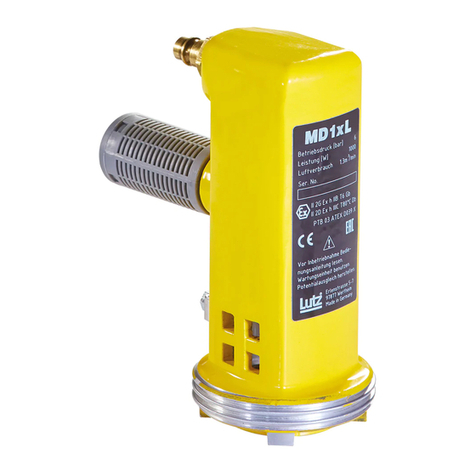
Lutz
Lutz MDxL Series operating instructions
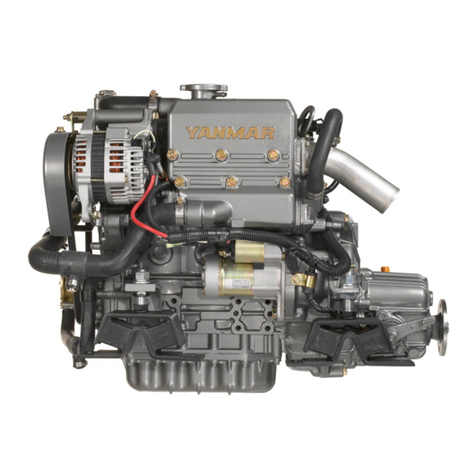
Yanmar
Yanmar 2YM15 Operation manual
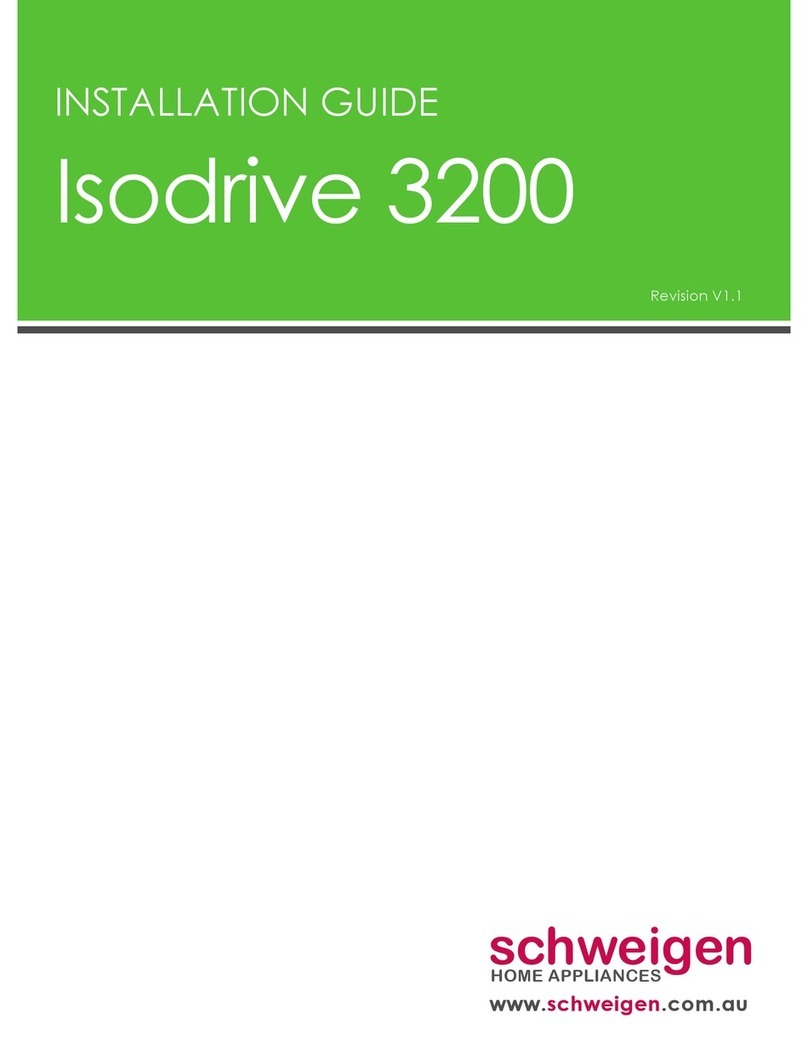
Schweigen
Schweigen Isodrive 3200 installation guide

FAW Jiefang Automotive
FAW Jiefang Automotive 485 Operation & maintenance guide
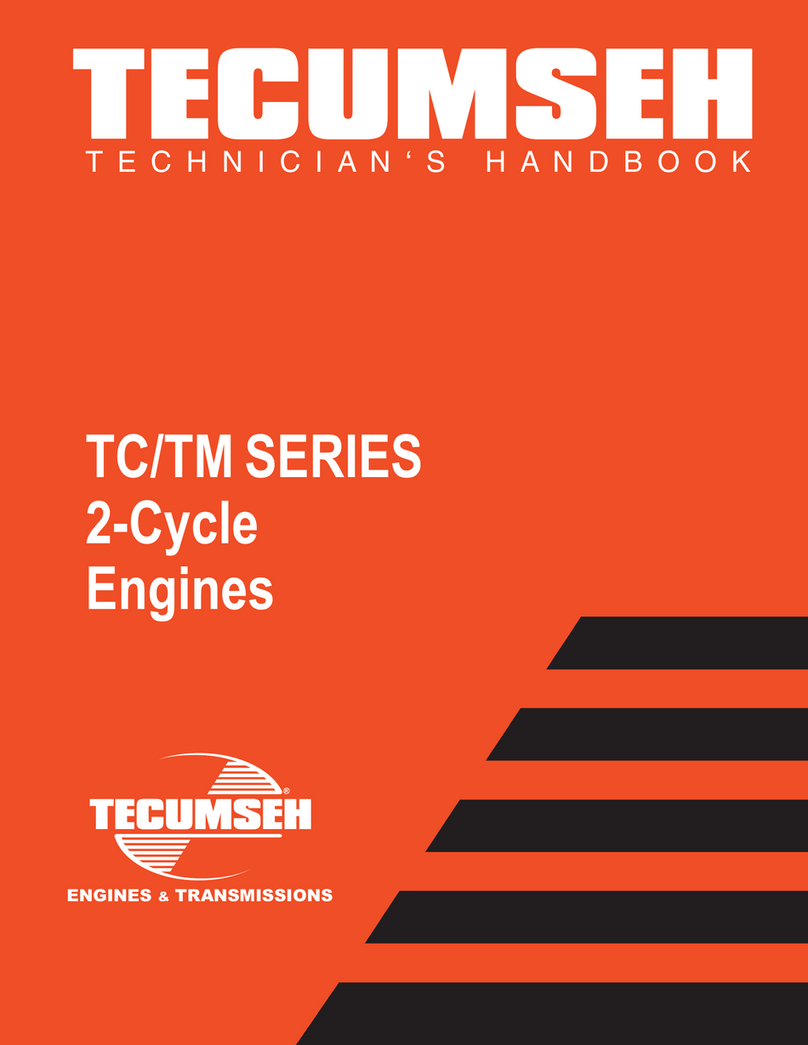
Tecumseh
Tecumseh TM SERIES Technician's handbook
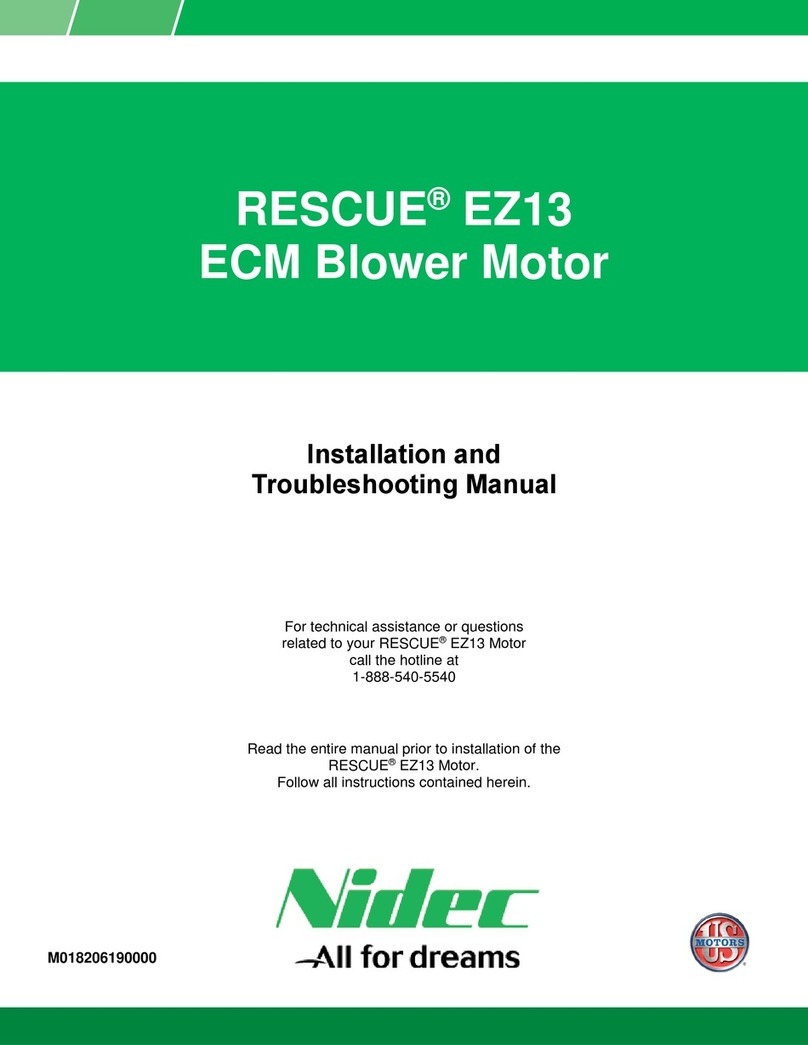
Nidec
Nidec RESCUE EZ13 Installation and troubleshooting manual

